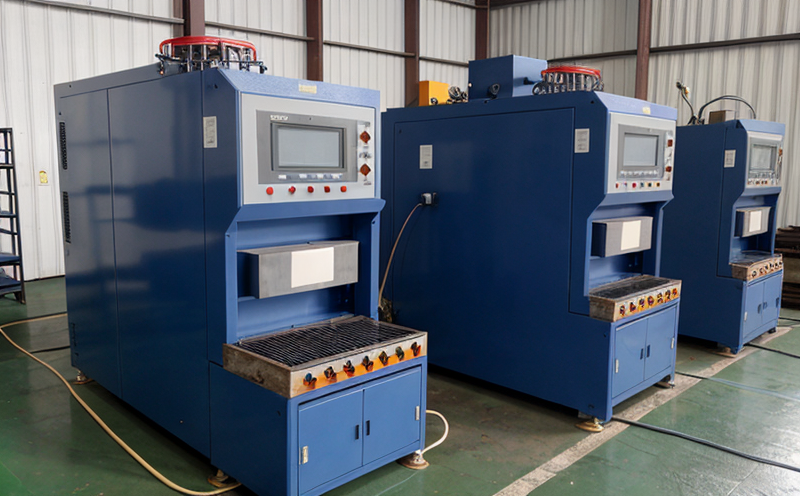IEC 60247 Insulating Liquids Raw Input Testing
The IEC 60247 standard provides a comprehensive framework for testing insulating liquids used in electrical equipment. This service ensures the highest quality of raw materials and inputs, which are critical to the reliability and safety of electrical devices.
Insulating liquids play an essential role in many industrial applications such as transformers, circuit breakers, and power capacitors. These fluids serve multiple functions: they provide insulation between conductive parts, dissipate heat, and prevent arc formation during fault conditions. The quality of these insulating materials directly impacts the performance and longevity of electrical equipment.
The IEC 60247 standard mandates a series of tests to evaluate various properties of insulating liquids including dielectric strength, viscosity, flash point, pour point, oxidation stability, water content, and particle contamination. By adhering to this standard, manufacturers can ensure that their products meet the highest quality standards and comply with international regulations.
The testing process involves several steps. First, raw materials are received and inspected for compliance with specified chemical compositions and physical properties. Next, samples are prepared according to the IEC 60247 guidelines before being subjected to a series of tests designed to assess their suitability for use in electrical equipment.
- Dielectric strength test: Measures the voltage that can be applied across two electrodes immersed in the liquid without causing breakdown or arcing.
- Viscosity measurement: Determines how thick and viscous the fluid is at different temperatures. This property affects heat dissipation capabilities.
- Flash point determination: Identifies the lowest temperature at which vapors from a sample can ignite when exposed to an open flame.
- Pour point assessment: Establishes the coldest temperature at which the liquid will still flow freely.
- Oxidation stability evaluation: Assesses the resistance of the insulating liquid against oxidation caused by air or other oxidizing agents over time. Oxidized oil leads to reduced insulation effectiveness and increased risk of fire.
- Water content analysis: Ensures there is no excessive moisture present, as even small amounts can significantly degrade dielectric properties.
- Particle contamination detection: Screens for any solid particles that may interfere with electrical conductivity or cause wear on internal components.
The results of these tests provide detailed insights into the suitability of raw materials for specific applications. For instance, higher flash points indicate better thermal stability while lower pour points suggest easier handling in cold environments. Viscosity data helps optimize design parameters related to cooling systems and fluid dynamics within machinery.
By rigorously following IEC 60247 guidelines during production stages, manufacturers can minimize risks associated with poor quality insulating liquids. This not only enhances product reliability but also contributes towards maintaining stringent safety standards across industries relying heavily on electrical infrastructure.
Industry Applications
The IEC 60247 Insulating Liquids Raw Input Testing is applicable to a wide range of sectors where high-performance insulation is crucial. Key areas include:
- Power generation and distribution: Ensures safe operation of transformers, circuit breakers, and other critical components in power plants.
- Transportation: Supports development of electric vehicle batteries and charging infrastructure which require robust insulating fluids capable of withstanding extreme conditions.
- Aerospace & defense: Provides reliable insulation solutions for avionics systems subjected to harsh environmental factors like temperature fluctuations and mechanical stress.
- Oil & gas industry: Facilitates production processes involving complex machinery requiring stable, non-flammable liquids that maintain optimal performance under varying pressures.
In each of these sectors, ensuring consistent quality in insulating liquids is paramount. The tests conducted under IEC 60247 help identify potential issues early on, allowing for corrective actions to be taken before they become costly problems down the line.
Why Choose This Test
Selecting IEC 60247 Insulating Liquids Raw Input Testing offers numerous benefits that make it a preferred choice among quality managers, compliance officers, R&D engineers, and procurement professionals:
- Compliance Assurance: Ensures adherence to international standards ensuring seamless integration into global supply chains.
- Quality Control: Identifies potential defects early in the manufacturing process enabling timely adjustments for better end-product performance.
- Risk Mitigation: Reduces operational risks associated with substandard raw materials leading to enhanced safety measures within facilities.
- Cost Efficiency: Prevents costly rework and scrapped products by catching issues during the initial stages of production.
- Product Differentiation: Offers a competitive edge by delivering superior quality products that meet or exceed customer expectations.
With increasing regulatory pressures and heightened consumer awareness about product safety, selecting this test can help your organization stay ahead in today’s fast-paced business environment.





